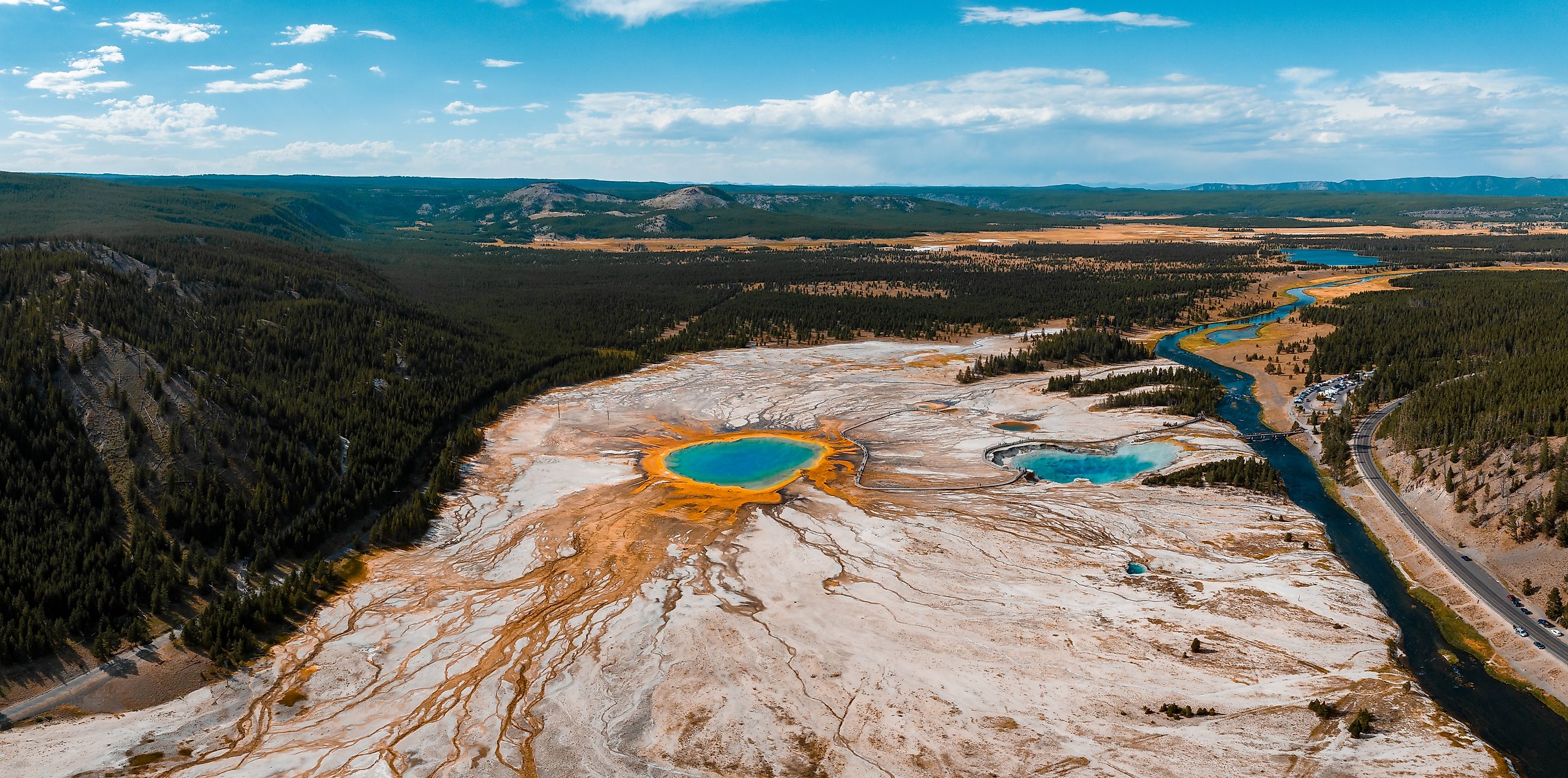
Upper Geyser Basin
Tucked within the geothermal wonderland of Yellowstone National Park lies one of the most extraordinary landscapes on Earth: the Upper Geyser Basin. This remarkable region is home to the largest concentration of geysers in the world—including the iconic Old Faithful—and offers visitors a front-row seat to the raw, living power of Earth’s inner workings.
Though most travelers come to witness Old Faithful's signature eruption, those who take the time to explore the broader Upper Geyser Basin will discover a stunning array of hydrothermal marvels. With more than 150 active geysers and countless hot springs, fumaroles, and pools, this is a place where geology is constantly in motion—and where the ground seems to breathe.
A Rare and Fiery Landscape
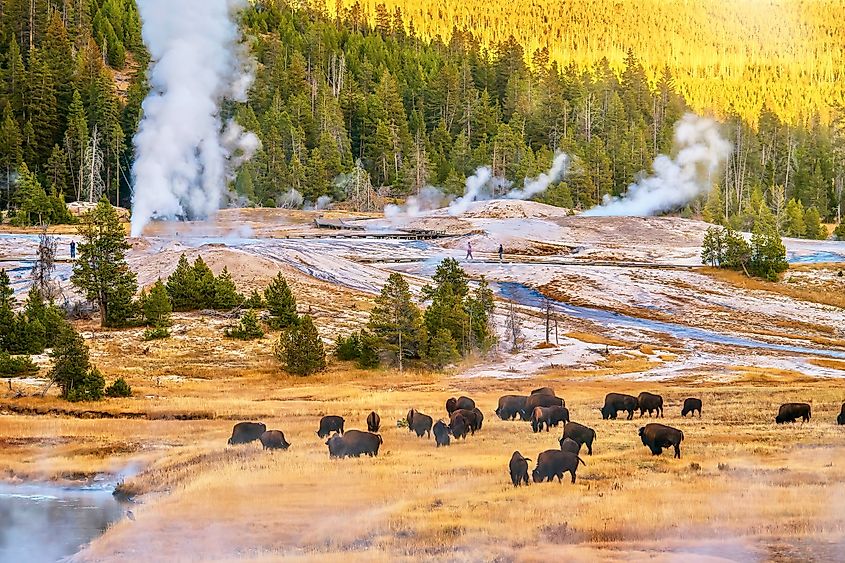
Yellowstone sits atop one of the world’s largest active volcanic systems, and the Upper Geyser Basin is its most vibrant expression. Beneath this rugged Wyoming terrain lies a supervolcano, its molten rock—or magma—lurking just 3 to 8 miles below the surface. Rain and snowmelt seep into the Earth and are heated by this magma, eventually rising back to the surface through a complex network of underground cracks and chambers.
This underground “plumbing system” is what gives life to Yellowstone’s geysers and hot springs. As water percolates downward, pressure builds until it forces superheated steam and boiling water back to the surface—sometimes gently as in bubbling pools, other times violently as in the explosive eruption of a geyser.
While hydrothermal features exist elsewhere—such as in Kamchatka (Russia), Iceland, Chile, and New Zealand—nowhere on Earth do they exist in such dense and dramatic concentration as in the Upper Geyser Basin.
Where to Begin
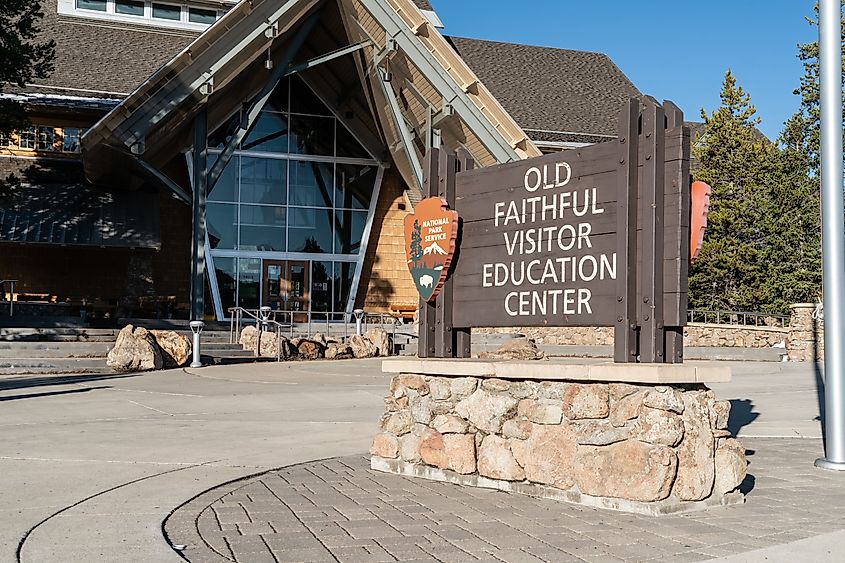
The best starting point for any journey into the Upper Geyser Basin is the Old Faithful Visitor Education Center. Located near the iconic geyser of the same name, the center offers in-depth exhibits on Yellowstone’s geothermal activity and up-to-date eruption forecasts for five major geysers: Old Faithful, Grand, Castle, Daisy, and Riverside.
Rangers provide estimated eruption times—some of which can be predicted within a window of about 10 to 20 minutes—allowing visitors to time their walks and maximize the number of eruptions they witness. Old Faithful, with eruptions roughly every 90 minutes, is the easiest to catch. But the real gem, many say, is Grand Geyser—the tallest predictable geyser in the world.
Not Just Old Faithful: Geysers Worth the Wait
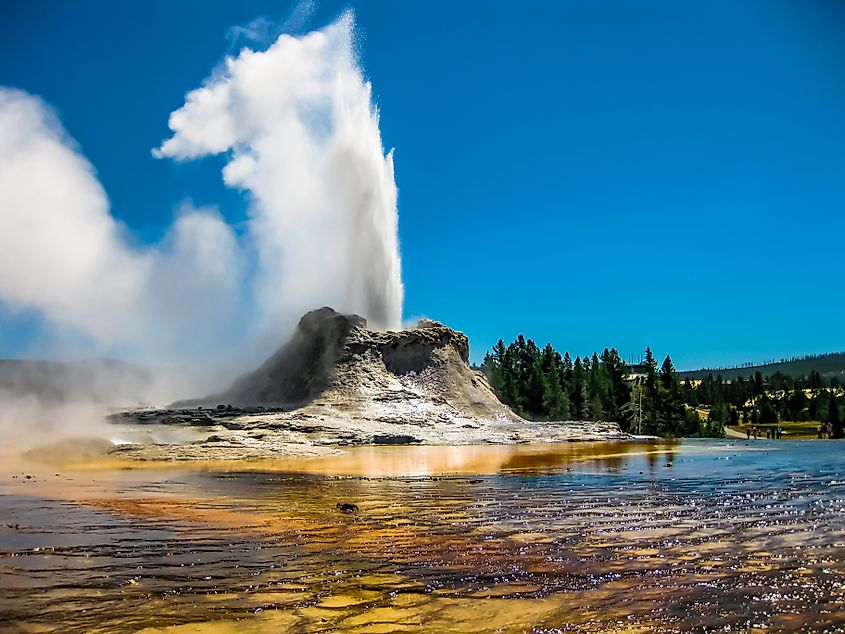
Old Faithful may be the headliner, but the supporting cast of geysers is equally compelling—if not more so for the dedicated geyser gazer.
Grand Geyser
Often considered the crown jewel of the Upper Geyser Basin, Grand Geyser can shoot water more than 200 feet into the air. Eruptions typically last between 9 and 12 minutes and are incredibly powerful and elegant. The intervals between eruptions range from 6 to 8 hours, making planning essential.
Castle Geyser
Named for its fortress-like cone, Castle Geyser erupts every 10 to 12 hours, spewing steam and water in a thundering display that can last up to 20 minutes. It's one of the oldest geysers in the park, both geologically and historically—it’s been photographed since the late 1800s.
Daisy Geyser
Erupting at a more predictable interval of roughly every 2.5 to 4 hours, Daisy Geyser puts on a diagonal display, spraying water up to 75 feet in a wide arc. Its charm lies in its accessibility and frequency.
Riverside Geyser
Set along the Firehole River, Riverside Geyser erupts like a natural water cannon over the river itself, reaching heights of around 75 feet. It’s one of the most photogenic geysers and erupts every 5.5 to 7 hours.
Morning Glory Pool and the Geyser Hill Loop
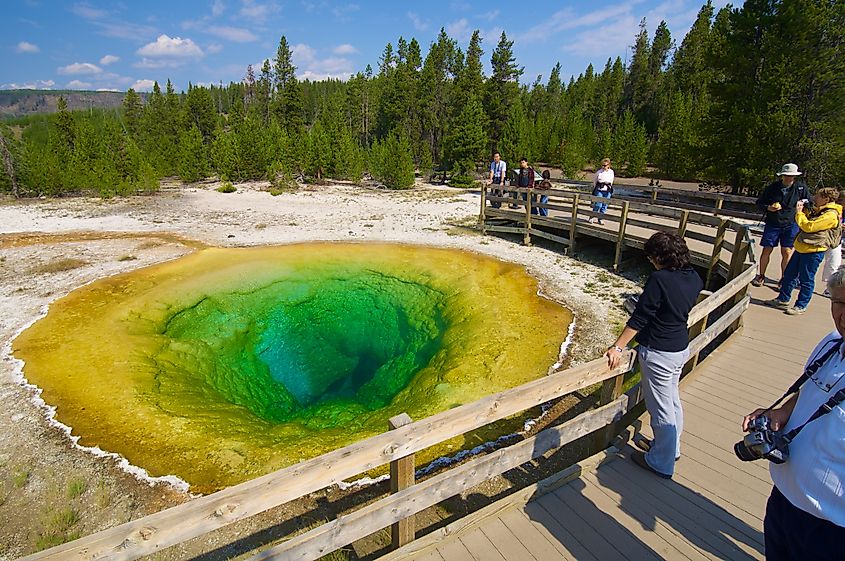
A favorite destination along the walking trails is Morning Glory Pool, a brilliant hot spring known for its deep blue center and colorful orange and yellow edges. The colors are the result of heat-loving bacteria and minerals, but sadly, years of visitor pollution have cooled the pool slightly, diminishing its once-dazzling hue.
Morning Glory marks the turnaround point for many hikers, but stopping here and heading back means missing some of the most magical parts of the Upper Geyser Basin. The Geyser Hill Loop Trail, easily accessible from Old Faithful, meanders past dozens of bubbling springs, spouting geysers, and steaming fumaroles. Highlights include Aurum Geyser, Beehive Geyser, and Lion Group Geysers, each with their own eruption patterns and personalities.
How to Explore the Basin
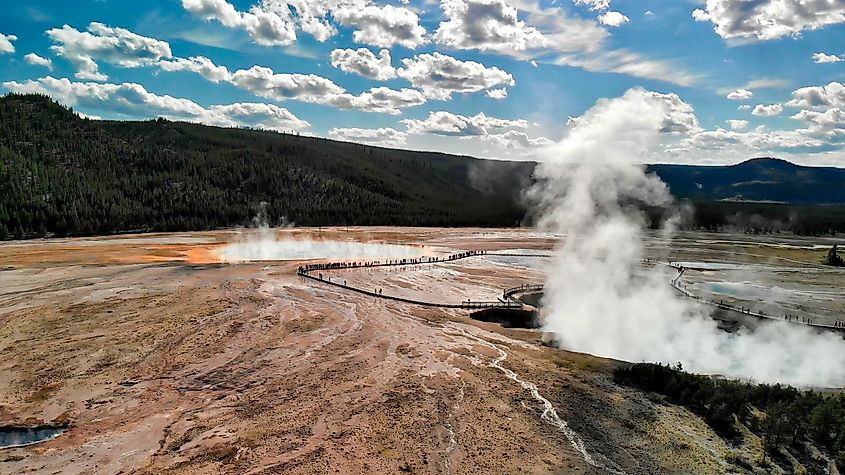
The Upper Geyser Basin isn’t something to rush through. While some visitors may be tempted to snap a photo of Old Faithful and drive on, those with a bit of patience will be richly rewarded. The network of boardwalks and paved trails stretches for several miles, offering both short loops and longer treks that wind through otherworldly terrain.
Here are a few suggested ways to explore:
-
Short Visit (1-2 hours): Watch an Old Faithful eruption, visit the Visitor Center, and walk the Geyser Hill Loop (~1.5 miles).
-
Half Day (3-4 hours): Add in a walk to Morning Glory Pool (~1.5 miles one way) and plan to catch at least one additional predicted geyser like Daisy or Grand.
-
Full Day: Pack lunch, grab a ranger-led walk schedule, and spend the day catching multiple eruptions and exploring side loops. Bring a camera, binoculars, and extra water.
Staying Safe in the Thermal Zone
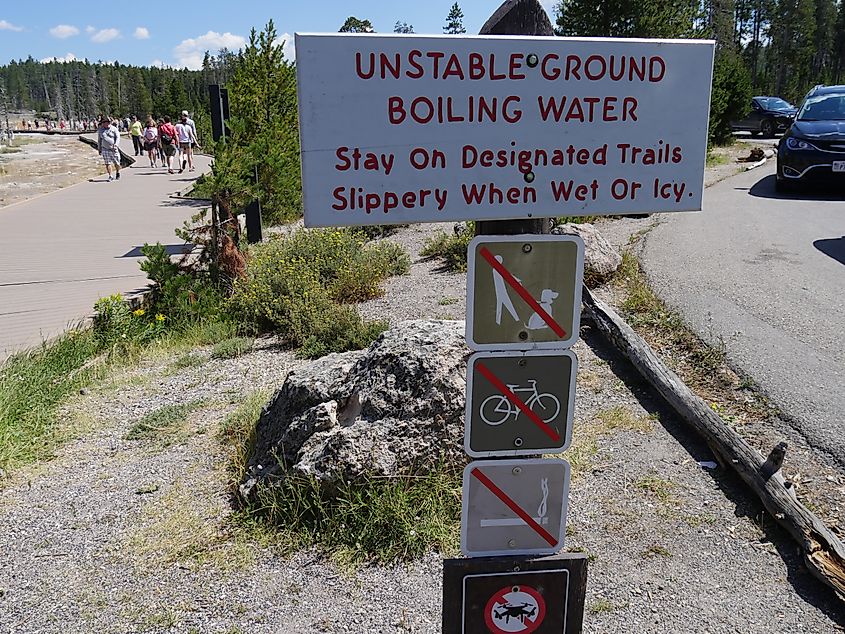
As awe-inspiring as these thermal features are, they come with serious hazards. The ground in hydrothermal areas is often thin and fragile, with scalding water just below the surface. Tragically, injuries and even deaths have occurred when people stepped off marked trails.
Here’s what to keep in mind:
-
Stay on boardwalks and designated trails at all times.
-
Never touch the water. It can be near boiling—even in pools that appear calm.
-
Watch children closely. Supervision is critical.
-
Do not throw objects into geysers or springs. It damages the natural system.
Remember: Yellowstone is a wild place. Your safety is your responsibility.
When to Visit and What to Bring
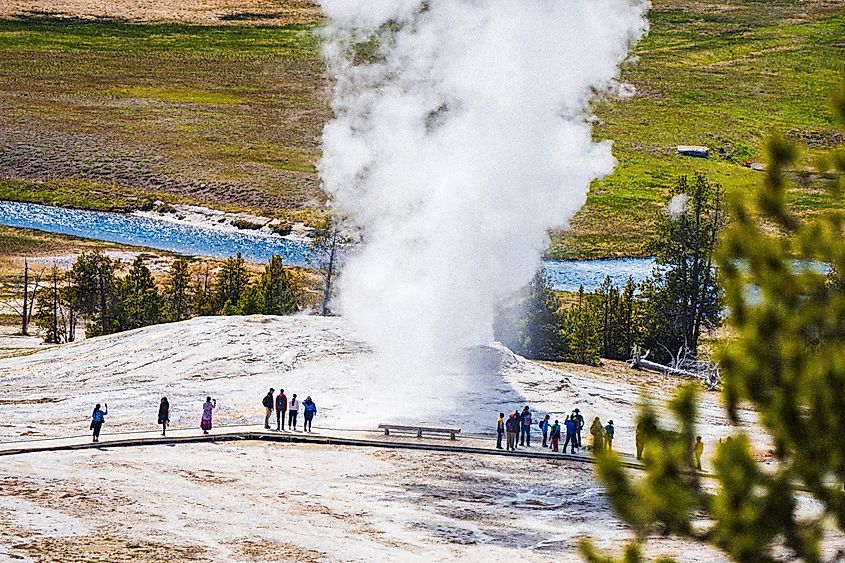
The Upper Geyser Basin is accessible year-round, but each season offers a different experience:
-
Summer: Warm temperatures and long daylight hours make it ideal for exploration. Expect crowds, especially around Old Faithful.
-
Fall: Cooler weather and fewer tourists make this a quieter time to visit. Wildlife is active, and fall colors add contrast to the steamy landscape.
-
Winter: A magical, snowy silence descends over the basin. While access is limited to guided snowcoach or snowmobile tours, it’s a surreal way to experience the geysers.
-
Spring: Melting snow feeds the geysers, and the landscape begins to bloom. Be prepared for lingering snow and chilly temperatures.
Regardless of the season, be sure to bring:
-
Comfortable walking shoes
-
Water and snacks
-
Sunscreen and a hat
-
Weather-appropriate layers
-
A camera and binoculars
Quick Tips:
-
Visit the Old Faithful Visitor Education Center first.
-
Check eruption predictions for the five major geysers.
-
Walk the Geyser Hill Loop and continue to Morning Glory Pool.
-
Avoid stepping off boardwalks—safety is paramount.
-
Allow several hours to a full day to experience the area fully.